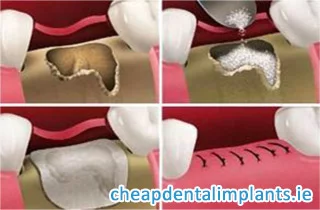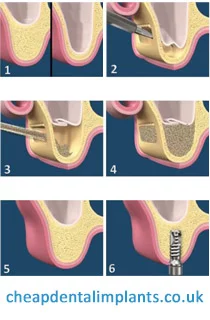The implantation of new teeth is the most effective, state-of-the-art method of tooth replacement. Patients can acquire new teeth that look like natural teeth and are almost as strong. However, even this method cannot be effective if the jawbones are not suitable to host the artificial roots. In this case, dental experts apply jaw bone augmentation procedures.
This article offers an overview of the following topics:
- What is augmentation in jaw surgery?
- Why is jaw augmentation necessary?
- Can jawbones regenerate?
- Does the jaw bone grow after the age of 18?
What is augmentation in jaw surgery?
Jaw augmentation is a surgical procedure that repairs or rebuilds the jawbone to improve its shape, size, or strength. It is usually used to correct bone loss, improve facial aesthetics, or prepare the jaw for dental implants.
Why is jaw augmentation necessary?

Bone loss from tooth loss: When teeth are missing for a long time, the jawbone shrinks due to lack of stimulation. Augmentation restores bone volume for implants.
Periodontal disease: Severe gum disease can lead to bone loss, requiring augmentation to stabilize the jaw.
Injury or trauma: Fractures or bone loss from accidents may require reconstruction.
Facial Aesthetics and Bite: Some patients seek surgery to correct a weak or underdeveloped jawbone for a more balanced facial structure.
Congenital Conditions: Some people are born with insufficient jawbone structure, which affects tooth function and appearance.
Types of Jaw Augmentation Procedures
Bone Grafting: Adding bone to strengthen the jawbone, often used in preparation for dental implants.
Ridge Augmentation: Expanding the width or height of the alveolar ridge (the part of the jaw that holds the teeth) to restore lost bone.
Sinus lift: Elevating the sinus membrane and adding bone in the upper jaw for implants.
Jaw Implants: Synthetic materials (such as silicone or Medpor) are used to cosmetically reshape or enhance the jaw.
Can jawbones regenerate?
Yes, jawbone can regenerate, but the extent of regeneration depends on several factors. Bone is a living tissue that can repair and remodel itself over time, especially when stimulated. Here’s how it works:
Natural bone regeneration: When a tooth is lost, the surrounding jawbone begins to shrink due to a lack of stimulation. However, in cases of minor injuries, the bone can heal on its own, especially if the patient is healthy and has a good diet. Eat for strong bones
Bone grafting: In cases where there is significant bone loss, natural regeneration may not be enough. Bone grafting techniques using the patient’s own bone, donor bone, or synthetic materials can help new bone grow. Over time, the graft integrates with the existing bone, aiding regeneration.
Guided Bone Regeneration (GBR): This advanced technique involves the use of membranes or specialized materials to guide bone growth in a specific area, often used to prepare the jaw for dental implants.
Stem Cell and Growth Factor Therapies: Emerging regenerative therapies use stem cells and biological growth factors to accelerate and enhance bone healing.
While the jawbone can regenerate under the right conditions, severe bone loss requires medical intervention. Early detection and treatment are key to maintaining a strong and healthy bone structure.
Does the jaw bone grow after the age of 18?
Jawbone growth typically slows down or stops after the age of 18, but certain factors can still influence bone changes throughout adulthood:
Natural growth & development: The lower jaw (mandible) may continue to grow slightly into the early 20s, especially in males. The upper jaw (maxilla) is usually fully developed by 18.
Bone Remodeling:
Even after growth stops, bone is constantly remodeling. This process allows the jawbone to adapt to changes in bite, tooth loss, or external forces like braces. However, without stimulation (like from teeth or implants), the jawbone can shrink over time.
Conditions that affect the Jawbone after 18: Missing teeth can lead to jawbone resorption (shrinking). Braces & orthodontics can influence minor changes in jaw position. Conditions like osteoporosis can affect bone density later in life.
So, while the jawbone doesn’t grow significantly after age 18, it remains a dynamic structure that can change and adapt based on external factors. Read about the cost of dental bone graft

